Nassington January 2024. The walk, Part One
Pictures by Simon Bradford. Commentary contributed at great personal risk and inconvenience by Sir Hardly Anyone.
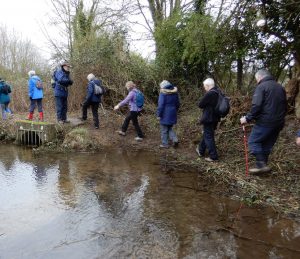 Nassington is a village in Northamptonshire, a county of which it has often been said.
Nassington is a village in Northamptonshire, a county of which it has often been said.
Indeed way back at the dawn of this century (ie 2001), the parish had a population of 670 but after a combination of procreation and immigration this had risen to 827 by the year 2011.
The River Nene which previously ran along the east of the village now apparently runs over the village. 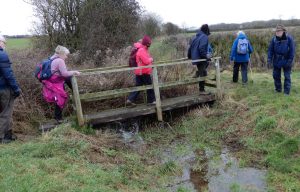
Indeed King Cnut the Great had a hall here, and when he was succeeded by King Cnut the Even Greater he then added a bridge in the 11th century which the valiant visitors to the now sunken village duly traversed in single file (dual carriageway bridges not being invented until around the 1500s).
You can see the Bridge Master, on the far right undertaking a role which has been continued since 1700 – also known as tea time. 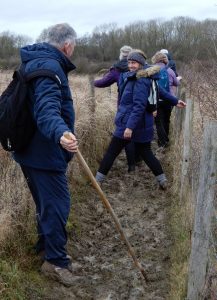
A film celebrating the area, “Don’t Look Back” was made on these parts some years ago, and the tradition of disobeying the command continues to this day. I think you may also be able to make out the obligatory cheeky grin which is part of the ancient ritual.
Of course there is also the requirement not to walk on the footpath because of its ancient and historical context and our valient walkers were keen to obey this, and the command to stroke the post and wire netting, as the walking continued. Being interested in conserving the past, all obeyed.
I am also told that samples of the collected mud have been added to our collection and will be on display at the AGM, pending a final decision by the Committee.
It is also a requirement in these parts that everyone should bring a 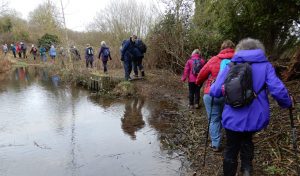 shadow person from the underworld to accompany them, this being then walking upside down (being based of course in Australia). Indeed here you can indeed witness a couple of these in close proximity.
shadow person from the underworld to accompany them, this being then walking upside down (being based of course in Australia). Indeed here you can indeed witness a couple of these in close proximity.
If you get close enough to such shadows you can be told the winning numbers of next week’s lottery, but you will also get wet.
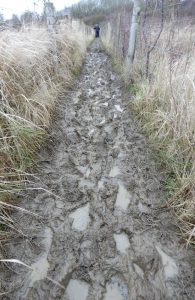 But I would not wish you to think that this walk was nothing but mud. For nothing could be further from the truth, for here you can see in this picture that to the left of the track there are growing things which have virtually no mud on them at all.
But I would not wish you to think that this walk was nothing but mud. For nothing could be further from the truth, for here you can see in this picture that to the left of the track there are growing things which have virtually no mud on them at all.
Also if you look with care at what we photographic and creative types like to call the “foot” of the picture you will also see that this is not “random mud” of the type you get in the northern reaches of our green and pleasant whatnot, but rather Northamptonshire mud which is of a completely different texture and hue, and of which there are many prized examples in the British museum. Although I do believe some are being offered to curators from foreign parts in return for their baubles and trinkets brought back by our pioneer explorers in years gone by.
And thus part one of the grand adventure comes to a close as our valiant ensemble arrived 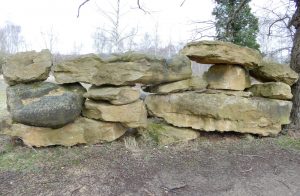 at the Wall of Stone, placed here centuries before, and which shows conclusively that in days of yore, the mud level was far higher than it is today.
at the Wall of Stone, placed here centuries before, and which shows conclusively that in days of yore, the mud level was far higher than it is today.
Years of Rambling have indeed worn down the mud levels in order for those who took care to be born in the 20th century, when mud was less of a local commodity, to be able to see these ancient stones down to their lower levels. The tale continues…